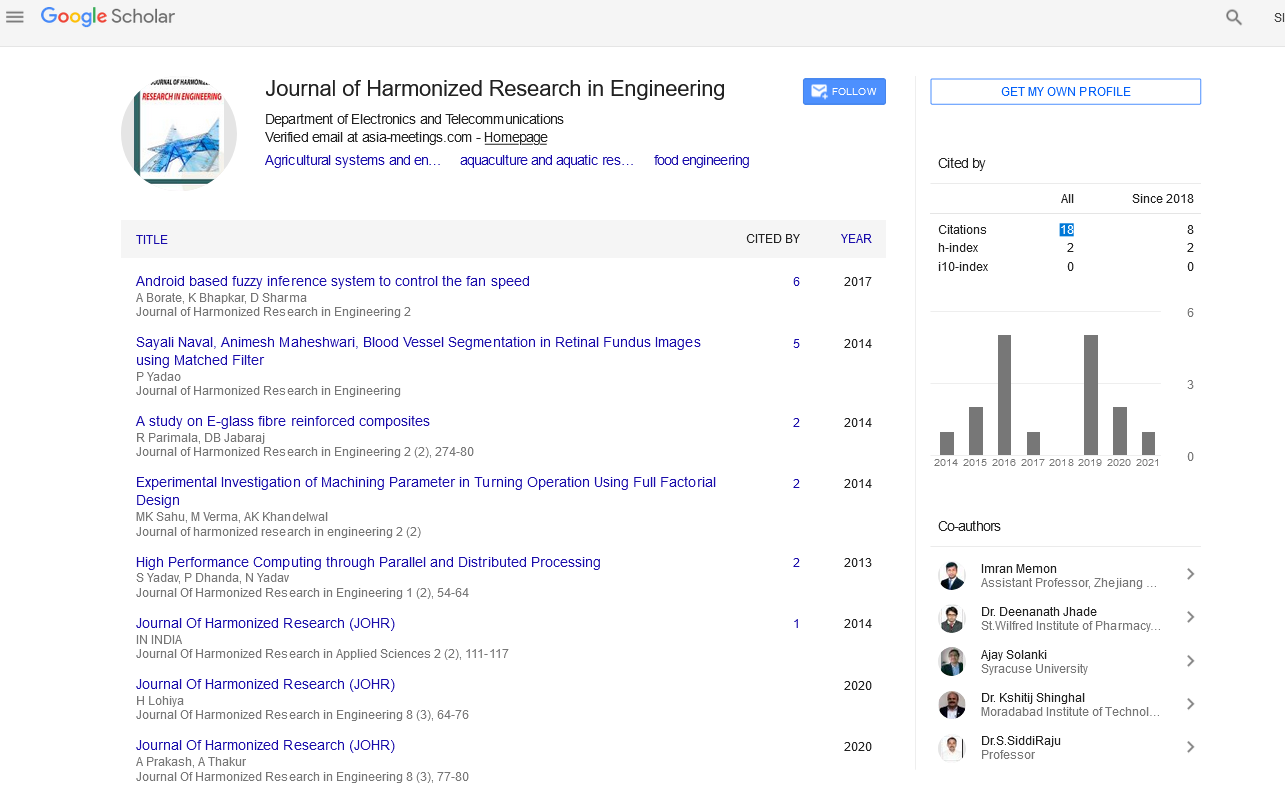Opinion Article - (2022) Volume 10, Issue 4
SIGNIFICANCE OF SAFETY PROCEDURES AND INDUSTRIAL ENGINEERING METHODOLOGIES
Serena Falco*Received: Nov 01, 2022, Manuscript No. JHRE-22-85082; Editor assigned: Nov 04, 2022, Pre QC No. JHRE-22-85082 (PQ); Reviewed: Nov 18, 2022, QC No. JHRE-22-85082; Revised: Nov 25, 2022, Manuscript No. JHRE-22-85082 (R); Published: Dec 05, 2022, DOI: 10.30876/2347-7393.22.10.210
Description
Economic engineering is a branch of engineering that focuses on creating, enhancing, and executing integrated solutions of people, capital, expertise, knowledge, and technology in order to optimize complex systems, systems, or organizations. Manufacturing activities depend heavily on industrial engineering. Industrial engineers specify, forecast, and assess the outcomes of systems and processes using specific knowledge and abilities from the physical, mathematical, and social sciences along with the standards and procedures of economic analysis and design. To ensure that systems, processes, and operations run smoothly in the manufacturing sector, a number of industrial engineering principles are applied.
This comprises Define, Measure, Analyse, Improve, and Control, Six Sigma, Data Management, and Lean Manufacturing. In addition to improving the quality and efficiency of physical and social systems, these principles enable the development of new systems, procedures, or circumstances for the practical coordination of labour, resources, and machinery. Depending on the subspecialties involved, applied research, systems engineering, manufacturing, distribution network technology, organizational theory, provides technical, financial analysis, ergonomic design or human elements technology, safety engineering, logistics engineering, or other subspecialties may also overlap with industrial engineering. This depends on the user’s perspective or goals. Most historians agree that the Industrial Revolution is when the profession of industrial engineering had its start. The invention, the rotating, and possibly most significantly—the steam engine were among the innovations that helped mechanism traditional manual tasks in the textile industry.
These innovations also created scale economies that for the first time made commercial production in data centre appealing. The factories built as a result of these developments are where the idea of the manufacturing systems originated. Quantitative and qualitative methods can be used to categories analysis techniques. The aim of both strategies is to identify the causal relationships between system-level hazards and component failures. The technological systems’ complexity—which includes things like better designs and materials, scheduled inspections, fool proof construction, and backup redundancy decreases risk while raising costs. For the creation of a safety-critical system, safety guidelines often provide a series of processes, deliverables documents, and exit criteria cantered upon strategy, analysis and design, implementation, validation and verification configuration, and quality assurance activities. Additionally, they often set goals for the development and application of traceability throughout the project. A failure mode can typically be reduced once it has been recognized by installing more or redundancy gear to the system.
For instance, nuclear reactors emit ionizing substances, and nuclear reactions might generate such intense heat that no material may be able to contain them. Reactors are therefore equipped with emergency core cooling systems, shielding to confine radiation, and built barriers to stop unintentional leakage. A frequent requirement for safety-critical systems is that no one incident or component failure may resulting in a catastrophic collapse scenario. The majority of biological organisms contain several organs, limbs, etc., which adds to their degree of redundancy. It is virtually always possible to design and include a loss or redundancy into a system for every given failure. The cheapest form of design is frequently “inherently fail-safe” when adding gear is not viable. That is, alter the system’s design to prevent catastrophic failure modes. Hospital instruments, traffic and railroad signals, communication devices, and safety equipment frequently have inherent fail-safes. Certain systems will never be made failsafe because they require continual availability. For instance, losing engine thrust while flying is risky. For these circumstances, redundancies, high availability, or recovery processes are used. Additionally, this reduces the system’s sensitivity to quality-induced uncertainty or reliability prediction mistakes for the individual items. To achieve system level reliability, on the other hand, loss detection and repair and prevention of common thread failures become increasingly crucial. Although the term “industrial” was initially used in reference to manufacturing, it can now be used to refer to any logical or statistical approach to improving how a method, system, or organization functions. Industrial engineering actually refers to the business in its broadest terms by the word “industrial.” The term “industrial” has been replaced by more inclusive terminology like “industrial and management,” “industrial and systems engineering,” “industrial engineering and operations research,” and “industrial engineering and manufacturing engineering.”

Google Scholar citation report
Citations : 43
Journal of Harmonized Research in Engineering received 43 citations as per google scholar report









